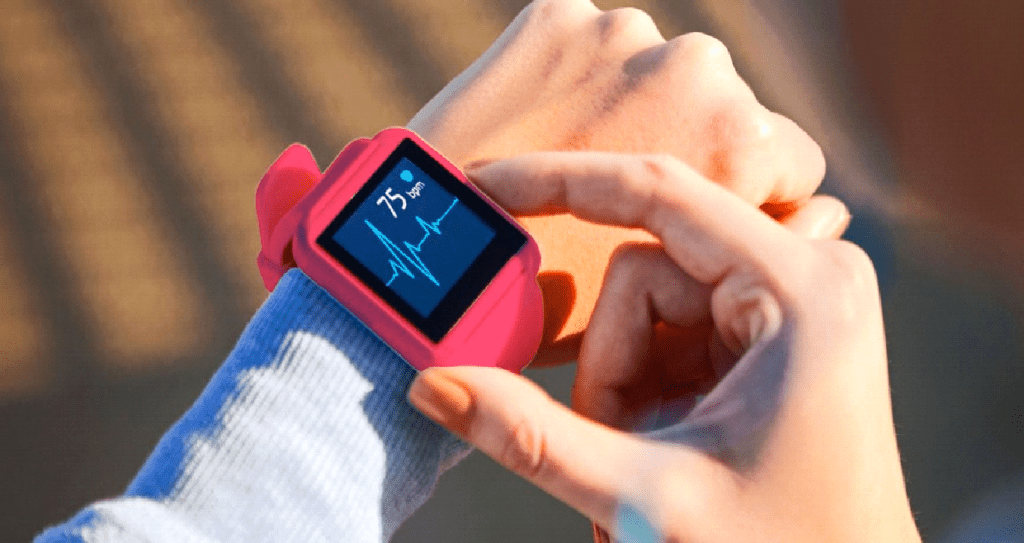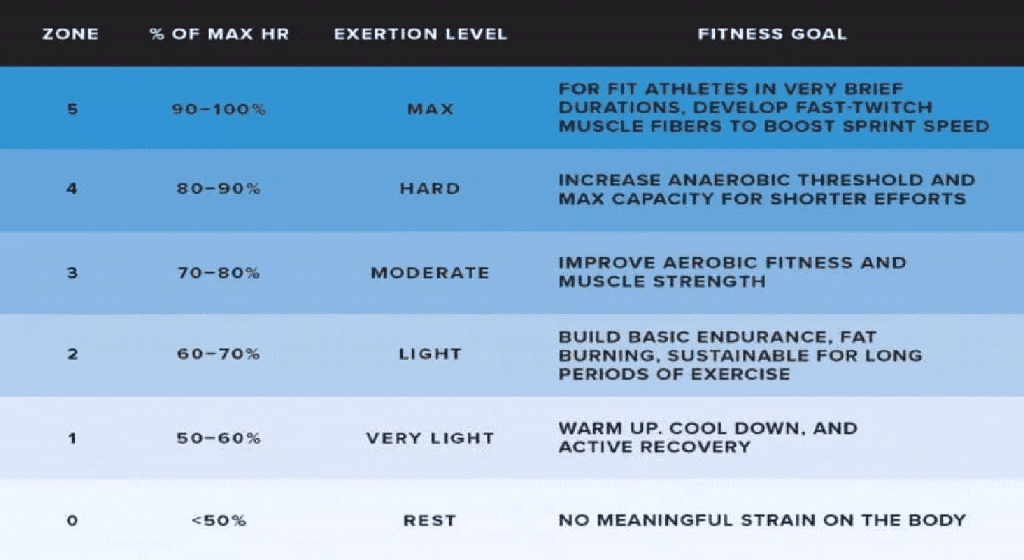Fat Burn Heart Rate

Fat Burn Heart Rate
To burn fat, you need to elevate your heart rate. This can be accomplished through cardio exercise or weightlifting. While the ideal heart rate for burning fat may vary depending on your age and fitness level, there are a few guidelines you can follow to help you achieve your goals. By understanding the relationship between heart rate and fat loss, you can create an effective workout routine that will help you achieve the body you desire. So what is the best way to raise your heart rate and burn fat? Keep reading to find out!

A fat-burning rate is supposed to mean how fast an individual heart beats to get the best fat-burning results possible. Fitness experts say that the burning of fat helps in maintaining the heartbeat. For someone who wants to reduce their weight, it seems a fantastic exercise option. Although it may be believed that these exercises mainly burn fat, they have many different advantages. Keep reading and learn how it can help you to lose weight faster.
How to calculate Fat burn heart rate
The average heart rate of a person is 65–95 times a minute and the maximum heart rate is determined by the person’s age. In an annual study published last year, the American Heart Association said the average heart rate for moderate-intensity exercise was around 65–75% your maximum heart rate.
Exercise at a moderate intensity
When you exercise at a moderate intensity, your heart rate increases and you start to breathe harder. This heart rate is called your fat-burning heart rate which is around 70% of your maximum heart rate.
To calculate your fat-burning heart rate, subtract your age from 220. For example, if you’re 40 years old, your maximum heart rate is 180 beats per minute (bpm). Therefore, your fat-burning heart rate would be 140 bpm.
This heart rate is a good target to aim for when you’re exercising at a moderate intensity. It’s also a heart rate that you can sustain for a long period, which makes it ideal for fat burning.
Exercise at a higher intensity
When you do a high-intensity workout your heart rate will be higher than your fat-burning heart rate. This heart rate is called your anaerobic threshold heart rate.
To calculate your anaerobic threshold heart rate, subtract your age from 180. For example, if you’re 40 years old, your maximum heart rate is 140 bpm. Therefore, your anaerobic threshold heart rate would be 100 bpm.
This heart rate is a good target to aim for when you’re exercising at a high intensity. It’s also a heart rate that you can sustain for a short period, which makes it ideal for burning calories and improving your aerobic zone fitness.
Average Fat-Burning Heart Rate Ranges by Age
Age Fat-burning heart rate (beats per minute)
20 years 120–140 bpm
30 years 130–136 bpm
40 years 126–129 bpm
50 years 119–122 bpm
60 years 112–120 bpm
70 years 104–108 bpm
Heart rate zones
There are five heart rate zones that you can target when you exercise. Each heart rate zone has a different intensity and a different purpose.

Zone 1 is the lowest intensity zone and Zone 5 is the highest intensity zone. The burning heart rate zones are a good way to keep track of how hard you’re working when you exercise.
Monitoring heart rate during workouts
Many treadmills and elliptical equipment also have special sensors that can be read and analyzed for heart rhythm. Other wearable devices such as cardiac monitoring devices and smartwatches can measure heart rates automatically without altering your posture while exercising.
Exercises for Fat Burning Heart Rate
Energy sources for exercise vary depending on intensity. A lower activity level increases the energy generated by fat. At intense activities, more energy is obtained through carbohydrates breakdown. The most effective workout plan should keep you engaged. Combining low-intensity exercise training with strength training is the most beneficial for cardiovascular fitness. This physical activity will help in losing weight and reduce more fat calories.
The following exercises can help burn calories and stored fat:
- Jogging
- Cycling
- Dance
- Golf
- Tennis
The link between heart rate and fat loss
Your brain needs glucose to power its cells. The 2 main sources of fuel are cellulose and lipid which break down into glucose and eventually carbon dioxide and water. Oxygen needs oxidation (breaking down) of glycogen to fuel muscle and fat. Your metabolism increases as you exercise. So the heart can pump more energy into a muscle cell so it breaks down more lipids. Despite being 4 calories per day, one cup of carbohydrates contains only 8 more calories.
Target heart rate fat loss zones
The resting heart rate (RHR) is how many minutes you beat at rest. It can be determined if your fingers are held at a specific position in your hand. The healthy RHR ranges from 60 to 100 psi. The maximal heart rate (MHR) of a person’s heart rate will be measured by subtracting age from 220. Typically your MHR is 190 / 25. When a person exercises specifically cardio, the different heartbeat zones are correlated with different intensities.
Effectiveness of Targeting Fat-Burning Heart Rates
Exercising at your fat-burning heart rate is an effective way to burn more fat. It’s one of the most effective ways to burn fat.
When you exercise at a moderate intensity, your body uses a higher percentage of fat for fuel. This means that you’re burning more fat than you would if you were exercising at a lower intensity.
The best way to exercise your fat-burning heart rate is to use a heart rate monitor. A heart rate monitor will help you keep track of your heart rate so that you can make sure you’re exercising in the right heart rate zone.
Although burning fat at an impressive heart rate can help you reduce body fat, it isn’t just a consideration in your diet. Weight loss is simply measured as total calories consumed minus fat burned.
Caloric diets are dependent in part on macronutrient consumption, such as fats, carbohydrate-protein and other nutrients. This contains variable amounts of calories in grams – between 3 – 5 calories/g. Fibre plays an important part in caloric intake as insoluble fibre that can’t be digested.
Tools to measure heart rate
There are many different ways to measure heart rate. Some of the most common ways to measure heart rate are:
Heart rate monitors
Heart rate monitors have become increasingly popular in recent years, as people look for ways to track their fitness and monitor their heart health. There are a variety of different types of heart rate monitors available on the market, from basic wrist-worn models to more advanced chest strap monitors.
Most heart rate monitors use optical sensors to measure the heart’s beats per minute, and may also include additional features such as GPS tracking and activity tracking. Heart rate monitors can be an extremely useful tool for anyone looking to improve their fitness level or monitor their heart health. However, it is important to consult with a doctor before using a heart rate monitor, as they can sometimes give false readings.
Chest strap heart rate monitors
A chest strap heart rate monitor is a wearable device that helps you track your heart rate while you exercise. The monitor consists of a sensor that attaches to your chest and a receiver that you wear on your wrist. The sensors pick up electrical signals from your heart and send them to the receiver, which then displays your heart rate in real time.
Chest strap monitors are more accurate than wrist-based monitors, making them a good choice for serious athletes who want to track their progress. In addition, chest strap monitors typically have more advanced features than wrist-based monitors, such as the ability to track the target heart rate zone and calculate the total calories burned. If you’re seeking a reliable and feature-rich heart rate monitor, a chest strap model is worth considering.
Wrist heart rate monitors
Wrist heart rate monitors are devices that are worn on the wrist and used to measure one’s heart rate. There are a variety of different types of wrist heart rate monitors, but most of them use sensors to detect the electrical signals that are generated by the heart. This information is then transmitted to a display device, where it can be read by the user.
Wrist heart rate monitors can be used for a variety of different purposes, including exercise, weight management, and monitoring medical conditions. While they are not as accurate as other types of heart rate monitors, they are much more convenient to use and can be found at a variety of different price points.
Finger heart rate monitors
Wrist-worn fitness trackers have been all the rage in recent years, but if you’re looking for a more accurate way to measure your heart rate, a finger-worn monitor may be a better option. Unlike wrist-worn monitors, which can sometimes produce inaccurate results due to the movement of the wrist, finger-worn monitors are much more precise.
They’re also generally less expensive than their wrist-worn counterparts. In addition, finger-worn monitors are typically smaller and more discreet, making them less obtrusive when you’re working out. If you’re looking for a more accurate way to track your heart rate, a finger-worn monitor may be the right choice for you.

Heart rate formula
The heart rate formula is a way to calculate your heart rate. The heart rate formula is:
Heart rate = beats per minute
To calculate your heart rate, you need to know how many times your heart beats in one minute. You can measure this by taking your pulse.
To take your pulse, place your fingers on the inside of your wrist, on the thumb side. Use your other hand to hold your fingers in place.
Count the number of times your heart beats in one minute. This is your heart rate.
Choosing a fat-burning workout
Choosing a fat-burning workout routine is the first step to losing fat. But knowing how to calculate your fat-burning heart rate can help you make the most of your workouts.
This fat-burning heart rate is based on a percentage of your maximum heart rate. For most people, that fat-burning heart rate is between 60 and 80 per cent of their maximum heart rate.
To calculate your fat-burning heart rate, you first need to know your maximum heart rate. You can do this by subtracting your age from 220.
Once you know your fat-burning heart rate, aim to keep your target heart rate within that target during your fat-burning workouts.
Here are a few exercises that may assist you in reaching your fat-burning zone:
- Gentle jog
- social tennis
- swimming
- Slow cycling
- brisk walking
- classic dancing
When you’re trying to lose fat, it’s still important to occasionally raise your heart rate into the vigourous zone. Working out harder strengthens your cardiovascular system and burns more calories than moderate exercise.
Other ways to lose fat than exercise
Eat a diet that focuses on whole foods
Whole foods are unprocessed and unrefined, and they’re a great way to lose fat.
They’re also packed with nutrients that are essential for fat loss, such as fibre, protein, and healthy fats. In addition to eating whole foods, you should also focus on eating the right kinds of foods.
Some great fat-loss-friendly foods include:
- Lean protein, such as chicken, fish, and tofu
- Fruits and vegetables
- Beans and legumes
- Healthy fats, such as avocados, olive
Drink plenty of water
Water is essential for fat loss. It helps to keep you hydrated, which is important for both your overall health and fat loss.
In addition, water can help to fill you up, so you’re less likely to overeat. Aim to drink 8-10 glasses of water per day, and more if you’re exercising frequently.
Get enough sleep
Sleep is important for fat loss. It helps to regulate your hormones, which can impact your appetite and metabolism.
Aim for 7-8 hours of sleep per night.
Take a look at portion sizes
One of the most important things you can do for fat loss is to pay attention to portion sizes. Overeating can lead to weight gain, even if the foods you’re eating are healthy.
To lose fat, make sure you’re eating the right amount of food.
Reduce stress
Stress can impact your hormones and lead to weight gain. To reduce stress, try yoga, meditation, or deep breathing.
Conclusion
Though sometimes confused with weight loss measures fat-burn is an idea form of energy being used as energy at certain levels in an exercise routine. Intensity dictates the intensity of the exercise. The fat-burning rate of a moderate exercise program is determined according to a person’s maximum age and heart rate.
The fat-burning zone is a heart rate range that’s ideal for fat loss. To find your fat-burning zone, you can use a heart rate monitor or the Karvonen formula. Remember, to lose fat without losing muscle, you need to focus on eating a healthy diet and getting enough protein. You can also try resistance training to help maintain muscle mass.
FAQ’s
Which method of determining a target heart rate zone is more accurate?
The most precise way to calculate heart rate zones is to perform a supervised VO2 lab test, in which the intensity of the exercise is gradually increased every minute until the athlete can no longer maintain it.
Why do we use the Karvonen formula?
The Karvonen Formula is a mathematical formula that can be used to calculate your target heart rate (HR) training zone. To calculate the target heart rate, the formula combines the maximum and resting heart rates with the desired training intensity. For more accurate results, you should measure both your resting and maximum heart rates.
What heart rate zone is best for burning fat?
The fat-burning zone is where your exercise rate is around 80% of its maximum, also called your fat-burning heart rate. If you’re aiming to shed some weight and maintain fitness it’s generally important to increase your exercise intensity.
Will I burn fat if my heart rate is too high?
The concept of fat-burning zones relates to the way our bodies burn fat while working out. The greater your blood flow, the greater the number of calories burned compared to the other calories like carbohydrates.
How do I know if I’m in my fat-burning zone?
There are a few ways to determine if you’re in your fat-burning zone. You can use a heart rate monitor, or you can estimate your fat-burning heart rate by using the Karvonen formula.
What is the fat-burning zone?
The fat-burning zone is an ideal heart rate range for fat loss. This fat-burning zone is based on a percentage of your maximum heart rate. Most people’s fat-burning zone is between 60 and 80 per cent of their maximum heart rate.
Can I burn fat without exercise?
There are a few ways to lose fat without exercise, but diet and lifestyle changes are typically necessary for long-term fat loss. Some simple lifestyle changes that can help you lose fat include eating a healthy diet, staying hydrated, getting enough sleep, and reducing stress.
How can I lose fat without losing muscle?
To lose fat without losing muscle, you need to focus on eating a healthy diet and getting enough protein. You can also try resistance training to help maintain muscle mass. It is important to create a calorie deficit by eating fewer calories than you are burning each day. However, simply cutting calories can lead to muscle loss, so it is important to make sure that you are still eating enough protein to support your muscles.





